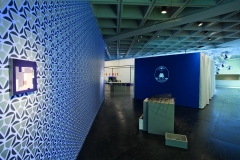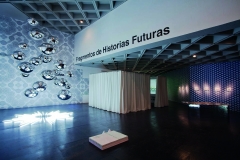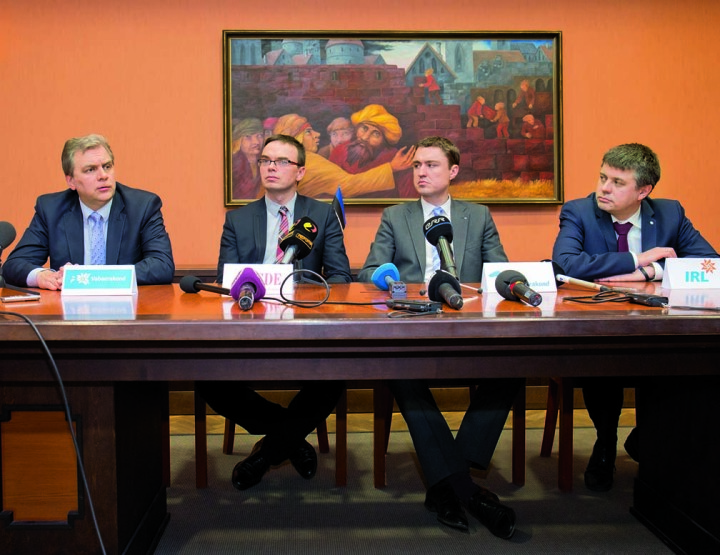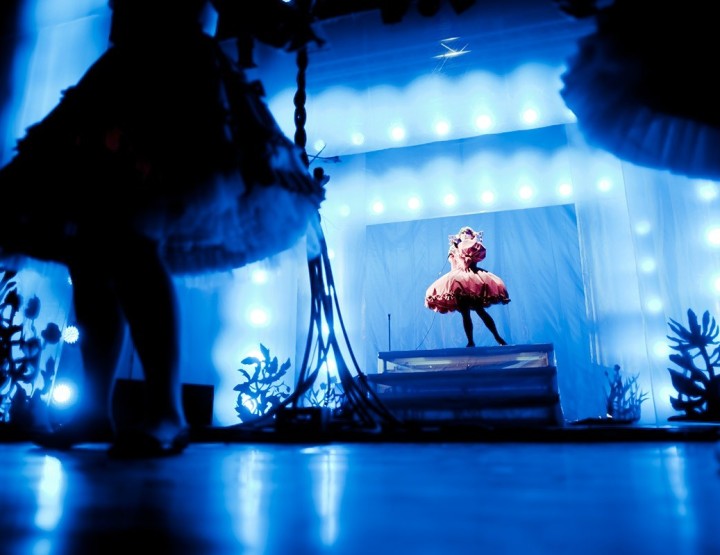Eero Epner (EE): In your essay Selected Nodes in a Network of Thoughts on Curating you define the task of the curator not just “choose randomly from the readymade dishes on offer”, because “recipes must be reformulated for every occasion”. At the same time one notices that in the field of art institutions more and more retrospective exhibitions and exhibitions based on star-artists and their fetish-art works are held in order to gain more audience. Do you yourself feel in your work this contra- diction, and what seems more reasonable for you: to ‘fight’ against this tendency, or to use or at least to move toward some alternative art institution system?
Maria Lind (ML): My impulse is to try and be sensitive to the needs of art and artists, and to develop formats for how to make art go public according to that, in relation to the where and when of the project. One example of that is how we at the Kunstverein München did a retrospective with Christine Borland which lasted for one year during 2002–2003 because we only ever showed one work at a time. Another example is the retrospective we did there with Rirkrit Tiravanija in 2004, in the form of a one-week long workshop preceded by a weekend meeting. This retrospective was made as a collaboration between the artist, a number of his former students and curators, critics and fellow artists who have followed his work. The Munich retrospective acted as the spring board for his more discussed, at least in the media, subsequent retrospective exhibitions at ARC in Paris, Museum Boijmans van Beuningen in Rotterdam and the Serpentine Gallery in London. In both cases the format was closely developed in relation to the logic and the sensibility of the art itself. I am think- ing a lot about the ‘forking’ which is going on in the world of contemporary art today. Of course there have always been different tendencies, groups and cliques but rarely before have we seen such a division between what we could call the mainstream and the sidestreams. Or rather the major and minor strands. The minors are the ones which are less visible in media terms and certainly less funded, whereas the majors occupy plenty of media space and attract money of different kinds, both public and private. However, the minors tend to be the site where new ideas are developed, where content is being provided to speak ‘neoliberalish’. It seems to be that we are facing a serious issue with the majors becoming more and more empty and spectacular, promoting the easily-consumed and consensus-friendly. At the same time the minors are involved with extremely important and interesting activities which are fairly closed. So the majors become more and more empty and the minors preach to the already converted. How long can this go on before we have a serious crisis where both ‘dry out’ and stagnate? None can really survive without some aspects which the other harbours.
How would you describe the task of an art institution, that is owned by state or municipality? How does it differ from the tasks private art gallery has? What does ‘public space’ mean in today’s art field?
This is an essential but difficult question. It depends on each case, and we should be careful in distinguishing what we mean by private art gallery. Is it a commercial gallery? Or a private collection, with or without access by the general public? I believe that it is necessary to be highly context-sensitive in every situation, regardless of funding structure, scale of the institution, geographical location etc. This being said, a characteristic of the early 21st century is the blending of private and public with commercial galleries supporting their artists’ projects in public institutions, sponsorship deals etc, but also a separation between the two. Private collectors set up their own institutions to a much higher degree than before and most of the time this means that they stop supporting public institutions with donations of work and money, which they did historically. At the end of the day the public institutions then have to deal with a double minus: budget cuts from the authorities plus the withdrawal of private support. As with any other kind of private property it is up to the owners what they do, they are not accountable to anyone else. It should also be remembered that there are private col- lectors who set up foundations to support certain kinds of art, in a less ‘selfish’ and/or business-minded way. Like the Patricia Phelps de Cisneros Foundation, with headquarters in New York, which focuses on art from Latin America and which does not have museum or any other physical place other than offices and storage. Instead it gives grants to artists, critics and curators from that region, it purchases work for the collection which circulates in the form of exhibitions, it buys work which is then being donated to public collections, it publishes books on related topics etc. It is essentially a support structure rather than an endeavour which aims at boosting and promoting the collection and its owners. Something similar goes for ‘public space’, i.e it depends. It would require a separate essay to flesh it out.
You have spoken about resistance on very many and different levels. When talking about Philippe Parreno for example, You mention that “the demonstration that was once an illegal form of collective protest has more recently become an ‘institution’, and one that is typically strictly regulated”. And when talking to Apolonija Šušterši, you mention that her art has “certain similarities with the way Michael de Certeau describes the potential of the everyday to undermine the sensibility of the dominant culture”. How important for you when working with artists is the notion ‘resistance’? And what kind of resistance?
This is a great observation that you are making. Resistance yes, but more than anything challenging status quo is important to me. To twist and turn the given preconceptions and conditions. I am as a human being committed to not automatically accept things which are handed down to us, the desires which are imposed on us, whether it is social norms, political systems or understandings of art. And art is a fantastic form in this regard. In art everything can be different, as it were. Everything Can Be Different was also the title of an exhibition which I curated for the Independent Curators International in the US in 2001, with works by for example Apolonija, Pierre Huyghe, Annika Eriksson and Superflex. Liam Gillick did the publication.
The title of your book is Selected Maria Lind Writing. I myself find the notion ‘writing’ in the context of today’s art field very noteworthy, and I have the feeling that ‘writing on art’ does not mean the same thing as it did 20–30 years ago. What is your opinion, what role does ‘writing on art’ as such play in today’s art field, and what kind of function does it have?
First of all art criticism has lost some of the influence it had in 20 years ago or more. Then it definitely shaped the agenda
of contemporary art. This is not the case anymore, for various reasons. One reason is that the arenas of written and published criticism have both shrunk and changed. Another is the rise of curating as a form of conscious and common form of articulation in the field of art. The forming of the agenda today is typically happening within curating. But whereas art criticism has lost some of its impetus, writing on art, or per- haps better writing along side art, has also become more interesting. Because it appears to be more diverse, forming hybrid kinds of texts which become public online, within exhibition contexts etc. So to my mind art criticism is weaker and less interesting today but writing in relation to art is not only productive but also exciting. And influential. I am thinking of everything from the e-flux journal and blogs like i heart photograph to artists who write fiction as part of their art, for example Matias Faldbakken, and artists who write alongside their other work, like Hito Steyerl and Marion von Osten. In my case writing is crucial, even obsessive. I write all the time. It is a way of articulating and producing ideas. It is my mental metabolism. But it was not until we started to work on Selected Maria Lind Writing that I realised how much I have written since the late 1980s. For the first time ever it struck me that to some degree I am a writer. Instead of selecting my own text, or asking one other person I was able, thanks to the great support of Caroline Schneider at Sternberg Press, to invite five people who were sent a big pile of texts, most of what I have written in English since the mid 90s. They then made individual selections and wrote a brief introduction to their selections. In this way I was hoping that my own work would be subjected to a process of scrutiny and selection which I myself as a curator perform in relation to other people’s work. I am delighted with the result.
I might be mistaken, but I have the feel- ing that you often speak about the critical power the art has, but seldomly about the power art criticism has. In Estonia many claim that art criticism has become a tool, that it has totally institutionalised and is therefore not legitimate. (One interesting fact, that has happened, is that several art critics ignore daily newspapers and even cultural weeklies, they don’t write there, and the most powerful platform for speak- ing about contemporary art is… Facebook. The web site, which is being used elsewhere for finding dates and mates, is in Estonia a democratic tool for contemporary art criticism.) Well. What I want to ask is: is there a way out also for art criticism?
To add to what I mentioned before: as the media landscape has gone through some very palpable structural changes over the last two decades, with big cuts of money and space at newspapers and magazines, so has art criticism. Particularly in newspapers. The phenomenon of the ‘discursive turn’ in art, in other words the desire to discuss and in other ways exchange in and around art, has taken on some of the functions of art criticism used to have to debate. I take this to be part of a larger development in culture towards direct engagement rather than influence through representation. You can see this in the increase in popular street protests from Seattle 1999 to North Africa, the Middle East and Spain this spring, as well as in demands for various forms of self-governance.
When somebody interviews a today’s art curator, he/she rarely asks about art, and prefers speaking about different art institutions. The same has happened here. So I would like to ask also about art, one plane and simple question: does art still has the power to save the world?
Contemporary art remains, for me, the most exciting and fruitful form of understanding that I know, on par with philosophy, science, religion, politics etc. The difference between contemporary art and the rest, how- ever, is that it engages with and encompasses all the rest. It is a huge sponge which can be squeezed and reshaped and new things will come out of it. Contemporary art helps us ask new questions, formulate different ideas, propose unknown visions and unheard ways of acting. It shapes the necessary stories and imaginaries, collective and individual, of our time. Which is crucial for the existence of any society. To ask from it to save the world seems to be an impossible, and even unfair, demand.
Maria Lind (1966), a curator and critic. She has recently been appointed artistic director of IASPIS in Stockholm. Between 2001 and 2004 she was director of the München Kunstverein. Previous to that she was curator at Moderna Museet in Stockholm (from 1997–2001) and in 1998 was co-curator of Manifesta 2 Europe’s nomadic biennale of contemporary art. Her book Selected Maria Lind Writing brings together twenty-two essays of hers. The collection of essays spanning from 1997 to 2010 forms a tapestry of Lind’s own interweaving interests: essays on individual artists, monographic and group exhibitions, funding structures, new contexts and spatial paradigms.








